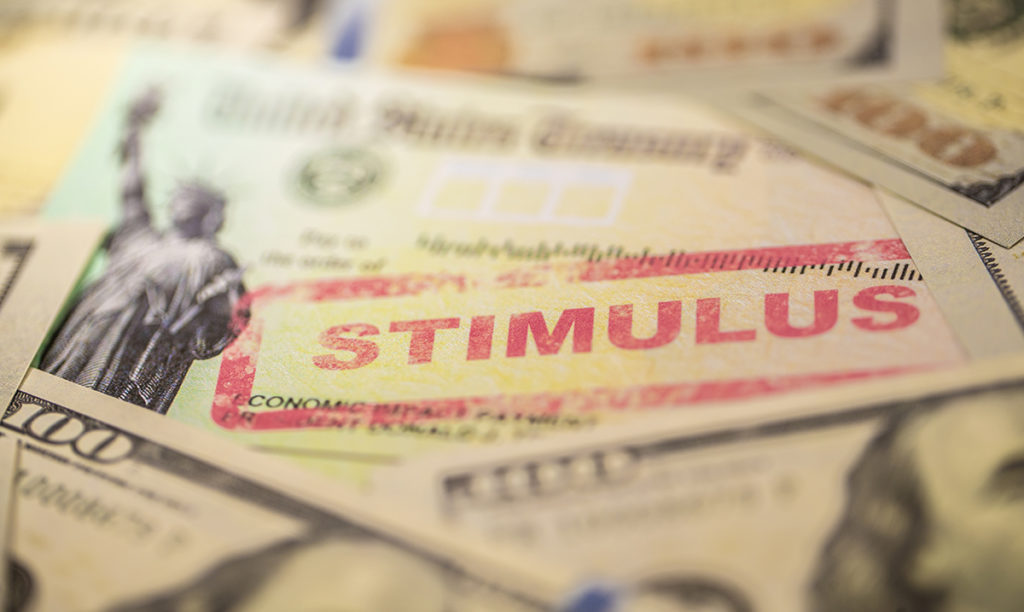Additional 2020 Economic Impact PaymentsJanuary 4, 2021

You’ve probably heard that IRS will be making millions of ”economic impact payments” (also called ”recovery rebates”) in the near future to help people stay afloat during this time of economic uncertainty related to the COVID-19 crisis. These payments are in addition to the $1,200 payments ($2,400 for married couples) issued earlier in 2020. Here’s what you need to know about these additional payments.
Amount of payment.
IRS has begun making payments of up to $600 to eligible taxpayers or up to $1,200 to married couples filing joint returns. Parents will get an additional $600 for each dependent child under age 17. Thus, a married couple with two children under 17 will get a $2,400 payment.
Who is eligible.
U.S. citizens and residents are eligible for a full payment if their adjusted gross income (AGI) is under $75,000 for singles or marrieds filing separately, $112,500 for heads of household, and $150,000 for married couples filing jointly and surviving spouses. The recipient must not be the dependent of another taxpayer and must have a social security number that authorizes employment in the U.S.
Phaseout based on income.
For individuals whose AGI exceeds the above thresholds, the payment amount is phased out at the rate of $5 for each $100 of income. Thus, the payment is completely phased out for single filers with AGI over $87,000 and for joint filers with no children with AGI over $174,000. For a married couple with two children, the payment will be completely phased out if their AGI exceeds $198,000.
Payments are nontaxable.
The economic impact payment that you receive won’t be included in your income for tax purposes. It won’t cause you to owe tax or decrease your refund for 2020.
How to get a payment.
The vast majority of people won’t have to do anything to get an economic impact payment. IRS will calculate and send the payment automatically to those who are eligible.
If you’ve filed your 2019 tax return, IRS will use the AGI and dependents from that return to calculate the payment amount. The credit won’t be allowed if the return doesn’t include a valid identification number (typically, a social security number) for each individual for whom a credit is sought. Thus, for example, a joint return must include valid identification numbers for both spouses to get the full $1200 credit. A $600 credit is allowed if only one spouse provides a valid identification number, and no credit is allowed if neither spouse does so.
IRS will deposit the payment directly into the bank account reflected on the return. IRS has developed a web-based tool called Get My Payment, www.irs.gov/coronavirus/get-my-payment, for individuals to provide banking information to IRS, so that payments can be received by direct deposit rather than by check sent in the mail. The tool includes the date the payment is scheduled to be issued to the individual.
If you have not yet filed for 2019. The due date for 2019 individual income tax returns was July 15, 2020, or October 15 if an automatic extension of time was requested on Form 4868. Individuals who are required to file a return for 2019 and haven’t done so should file the return as soon as possible. Doing so will help give IRS time to process and make all resulting economic impact payments before January 15, 2021 (the deadline for processing payments).
If you aren’t required to file. If you receive social security, supplemental security income, social security disability income, railroad retirement, or veterans’ compensation and pension benefits, and you aren’t required to file a tax return, you don’t have to file to receive a payment. IRS will generate an automatic payment using information from the Social Security Administration and the Department of Veterans Affairs. The payment will be made by direct deposit or paper check, in the same manner as the recipient’s regular benefits.
If you aren’t required to file a tax return and you don’t receive any of the above payments, you can register to receive an economic impact payment by providing information on IRS’s web-based Non-Filers: Enter Payment Info Here tool, www.irs.gov/coronavirus/non-filers-enter-payment-info.
Non-filers with dependent children; $600 payment.
Non-filers who have a dependent child under age 17 must register their dependents on the Non-Filers: Enter Payment Info Here tool to receive the additional payment of $600 per child. Non-filers who receive the economic impact payment before registering a dependent child can still get the additional $600 payment by filing a 2020 income tax return on which the dependent is listed.
Please let us know if you have any questions about the economic impact payments or any other COVID-19 issues.
Get In Touch
Please contact our team with any additional questions or feedback regarding this topic!

